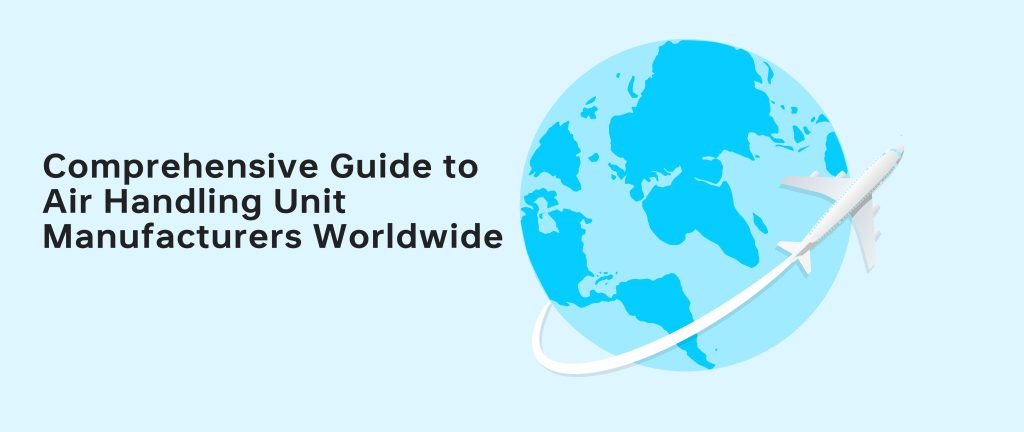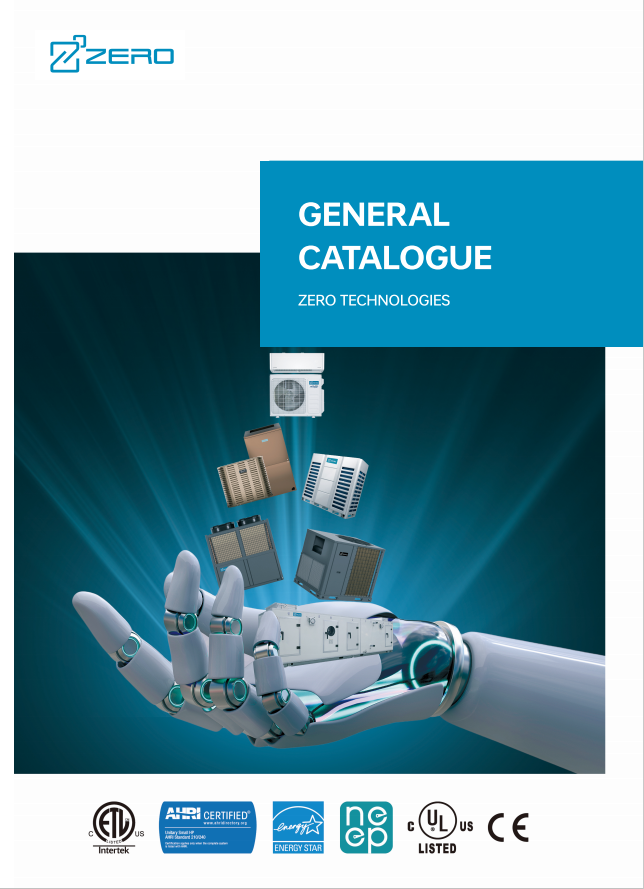The humble air conditioner has evolved from a luxury to a critical component of modern life, underpinning health, productivity, and economic activity across residential, commercial, and industrial landscapes. Driven by relentless climate change, accelerating urbanization, and heightened demands for indoor environmental quality (IEQ), the global HVAC market is undergoing a profound transformation. As we navigate 2025, energy efficiency is no longer a mere selling point but a baseline expectation, smart integration is becoming ubiquitous, and the shift towards eco-friendly refrigerants is accelerating rapidly. This article, grounded in ASHRAE (American Society of Heating, Refrigerating and Air-Conditioning Engineers) principles and the latest market intelligence, profiles the 20 manufacturers leading this charge. We delve beyond brand recognition, examining their technological strengths, regional dominance, and specialized capabilities to guide informed decisions for diverse cooling needs.
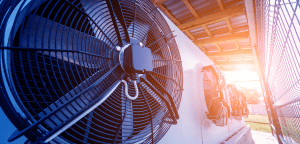
1. The Global AC Market Landscape: 2025 Dynamics
The global air conditioning market, valued at approximately $165 billion in 2024, is projected to grow at a CAGR of 6.5% (2020-2025), reaching nearly $210 billion by 2027 (Sources: Statista, MarketsandMarkets). This surge is fueled by:
Climate Change Impacts: Rising global temperatures and increased frequency/intensity of heatwaves are expanding cooling needs beyond traditional warm climates. The International Energy Agency (IEA) reports that space cooling energy demand grew by over 5% annually between 2020 and 2024.
Urbanization: Rapid urban growth, particularly in Asia and Africa, concentrates populations in heat island-prone areas, driving massive infrastructure demand. Over 60% of global AC sales now occur in Asia-Pacific.
Demand for Comfort & IEQ: Enhanced awareness of the link between thermal comfort, air quality, and health/productivity is driving demand for sophisticated systems.
Regulatory Push: Stricter energy efficiency standards (e.g., SEER2 in the USA, ISEER in India, Ecodesign in EU) and refrigerant phase-downs (Kigali Amendment to the Montreal Protocol) are forcing innovation.
Key regional powerhouses dominate manufacturing and consumption:
USA: A mature market focused on high-efficiency replacements (SEER2 mandate effective 2023) and smart home integration. Residential ducted systems and large commercial VRF/Chillers lead.
India: The world’s fastest-growing major AC market (over 12% CAGR 2020-2025), driven by rising incomes, urbanization, and extreme heat. Split ACs dominate, with significant commercial growth. Manufacturing hubs like Noida and Delhi are crucial.
China: The global manufacturing powerhouse, producing a vast volume of units for domestic use and export, increasingly focusing on innovation and quality. Smart ACs and exports are key growth areas.
UAE/GCC: Characterized by extreme cooling demands year-round, driving the market towards high-capacity, robust systems for skyscrapers, malls, and industrial facilities. Energy efficiency and district cooling are major focuses.
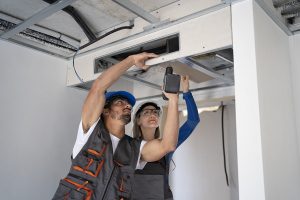
2. The Vanguard: Best 20 AC Manufacturers in 2025
This list represents leaders based on technological innovation, market share (global and regional), product reliability, sustainability initiatives, and breadth of solutions. Order reflects prominence but is not a strict ranking.
- Daikin Industries, Ltd. (Japan/Global): The undisputed global market share leader. Pioneers in inverter technology, VRV/VRF systems (a Daikin invention), and the widespread adoption of lower-GWP R-32 refrigerant. Unmatched R&D investment drives efficiency and innovative heat pump solutions for both cooling and heating, even in cold climates.
- Carrier Global Corporation (USA/Global): A founding giant of the industry (Willis Carrier invented modern AC). Strong across residential, commercial, and transport refrigeration. Leaders in sustainability with their EcoBlue initiative, focusing on ultra-low GWP refrigerants like R-454B and R-1234ze, and high-efficiency chillers. Strong presence in India via joint venture.
- Trane Technologies (USA/Global): Renowned for premium, highly reliable commercial HVAC systems (chillers, rooftops, VRF) and building automation (Nexia, Tracer SC). Significant focus on sustainability (Gigaton Challenge) and innovation in magnetic bearing chillers (CenTraVac) and cold climate heat pumps.
- LG Electronics (South Korea/Global): Dominates in inverter split ACs globally. Leaders in integrating smart technology (ThinQ AI, Wi-Fi) and advanced features like dual-inverter compressors, UVnano air purification, and quiet operation. Strong vertically integrated supply chain.
- Mitsubishi Electric Corporation (Japan/Global): Sets the benchmark for premium residential and commercial split systems, VRF, and heat pumps (notably their “Hyper-Heating” models). Exceptional build quality, reliability, and precise zoning control. Innovators in air purification and humidity control.
- Johnson Controls-Hitachi Air Conditioning (Japan/Global): Leverages Hitachi’s technological prowess (especially in compressors and motors) and JCI’s global building tech reach. Strong in high-efficiency inverter splits and VRF, focusing on comfort, quietness, and sustainability (R-32 adoption).
- Gree Electric Appliances (China/Global): The world’s largest residential AC manufacturer by volume. Massive R&D investment drives efficiency and innovation. Expanding globally beyond its dominant Chinese market, offering cost-competitive and increasingly advanced products.
- Midea Group (China/Global): Another Chinese behemoth, challenging Gree in volume. Highly efficient manufacturing and significant investment in automation and robotics. Produces ACs for numerous other brands (OEM) alongside its own. Strong in smart home ecosystems.
- Haier Smart Home / Haier HVAC (China/Global): Parent of the global Haier brand and owner of GE Appliances (USA) and Candy (Europe). Leaders in connected, smart ACs and IoT-enabled ecosystems. Significant focus on user experience and app control.
- Samsung Electronics (South Korea/Global): Known for stylish design and feature-rich inverter split ACs. Strong in digital inverter technology, Wind-Free™ cooling (minimizing drafts), and Tri-Care filtration. Competes closely with LG in the premium smart segment.
- Panasonic Corporation (Japan/Global): Excels in air quality integration (nanoe™ X technology) within its efficient inverter ACs. Strong presence in residential splits and commercial solutions like VRF, emphasizing health and purification alongside cooling performance.
- Rheem Manufacturing Company (USA): Major player in North American residential and light commercial unitary systems (air handlers, gas furnaces, ACs). Known for reliability and value, with growing investments in high-efficiency heat pumps.
- Lennox International Inc. (USA): Premium North American brand renowned for high-efficiency residential equipment (SunSource® solar-compatible systems, Signature™ series) and quiet operation. Strong dealer network for installation and service.
- American Standard Heating & Air Conditioning (USA): Part of the same parent company as Trane (Trane Technologies), offering high-quality, reliable residential systems often at a slightly more accessible price point than the Trane brand. Shares core technology.
- Friedrich Air Conditioning (USA): A specialist in high-performance room air conditioners (window, PTAC, vertical units), particularly known for durability, powerful cooling, and advanced features like QuietMaster™ technology in a compact form factor.
- Blue Star Ltd. (India): A premier Indian manufacturer dominating the commercial and industrial segment (precision AC, VRF, chillers, ducted splits). Strong engineering focus and extensive service network across India. Key player in specialized transport AC.
- Voltas Limited (India): A Tata Group company and the market leader in the Indian residential split AC segment. Strong brand trust, extensive distribution, and offers a wide range of products from value to premium inverter splits and some commercial systems.
- Godrej & Boyce (Godrej Appliances – India): Significant Indian player focusing on innovation and sustainability. Known for energy-efficient inverter ACs and early exploration of solar hybrid AC solutions tailored for the Indian market.
- Whirlpool Corporation (USA/Global): Primarily known for major appliances, but holds a solid position in the North American residential central AC and heat pump market, often offering competitive value and leveraging its strong brand reputation.
- O General (Japan/India – A Midea Group Company): Positioned as a premium brand in India and other markets. Historically known for exceptional durability and performance, particularly in harsh conditions (high ambient temperatures). Leverages Midea’s manufacturing scale.
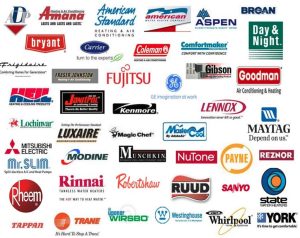
3. Regional Manufacturing Powerhouses
India: The Indian HVAC market is exploding. Beyond the giants (Voltas, Blue Star, Lloyd, Godrej), industrial hubs like Noida and Delhi host numerous component suppliers and specialized manufacturers. Key niches include:
Solar AC Manufacturers: Companies like Kryo Cooling Solutions and V-Guard (partnering with others) are actively developing solar hybrid and DC inverter ACs specifically for India’s grid challenges and solar potential.
Truck & Bus AC Manufacturers: Subros (major supplier to Tata Motors, Ashok Leyland), Blue Star, and Denso India lead in providing robust, high-capacity cooling systems for commercial vehicles operating in extreme Indian heat.
Case Study 1: Transforming Public Transport in Chennai: Blue Star partnered with the Chennai Metropolitan Transport Corporation (CMTC) to retrofit over 1,500 public buses with high-efficiency, corrosion-resistant AC systems specifically designed for coastal humidity and high ambient temperatures (>45°C). This project significantly improved passenger comfort and driver focus, boosting ridership during peak summer months.
USA: Dominated by integrated players like Carrier, Trane, Lennox, Rheem, and Goodman. Focus is on high SEER2 compliance, heat pump adoption (driven by IRA incentives), smart integration (Alexa/Google Home), and refrigerant transition (R-454B, R-32).
UAE: Relies heavily on imports from global giants (Daikin, Carrier, Trane, Gree, Midea) for large-scale projects. Local assembly and specialized engineering firms focus on custom solutions for extreme climates and integration with district cooling systems. Demand is exceptionally high for chillers, VRF, and large rooftop units.
China: Home to manufacturing titans Gree and Midea, alongside Haier. These companies dominate global production volumes and drive significant cost efficiencies. Increasingly, they are moving up the value chain, investing heavily in R&D for higher efficiency (meeting and exceeding global standards), smart technology, and proprietary innovations.
4. Masters of Specialization
Car AC Manufacturers: Global players like Denso, Mahle, Valeo, and Hanon Systems dominate the complex thermal management requirements of modern vehicles (EVs included). In India, Subros is a key domestic player.
Split AC Manufacturers: This is the dominant residential technology globally. All major players (Daikin, LG, Mitsubishi Electric, Hitachi, Panasonic, Voltas, Godrej, Samsung, Gree, Midea) compete fiercely here, focusing on inverter efficiency, quietness, smart features, and air quality.
Truck Cabin AC Manufacturers: Requires robust systems for harsh environments. Thermo King (Trane), Carrier Transicold, Denso, and Subros are global leaders, emphasizing reliability, high cooling capacity, and fuel efficiency.
Biggest Players (Scale): Daikin, Gree, and Midea consistently rank as the largest by volume and revenue globally. In India, Voltas leads the residential segment, while Blue Star dominates commercial.
5. The Cutting Edge: Technologies Shaping 2025 & Beyond
Advanced Refrigerants: The shift away from high-GWP HFCs (like R-410A) is accelerating. R-32 (moderate GWP, widely adopted by Daikin, others) and R-454B/R-32 blends are becoming mainstream. Research intensifies on Ultra-Low GWP options like R-290 (Propane) and R-1234yf/ze, demanding enhanced safety engineering (ASHRAE Standard 15, ISO 5149).
Intelligent Systems & IoT: AI-driven optimization, predictive maintenance, seamless integration with building management systems (BMS) and smart home platforms are standard. Units learn usage patterns, self-diagnose faults, and optimize performance for comfort and energy savings.
Enhanced Heat Pump Capability: “Cold Climate Heat Pumps” (CCHPs) from leaders like Mitsubishi Electric (Hyper-Heat), Daikin, and Carrier now provide efficient heating down to -25°C (-13°F) or lower, displacing fossil fuels in heating-dominated climates.
Solar & Renewable Integration: Hybrid solar PV-powered AC systems and DC inverter technology reduce grid dependence. Innovations in thermal storage for cooling are emerging.
Advanced Air Purification: Integration of technologies like bipolar ionization, photocatalytic oxidation (PCO), enhanced HEPA/activated carbon filtration, and proprietary systems (Panasonic nanoe™X, Sharp Plasmacluster) is becoming commonplace, addressing IAQ concerns holistically.
Material Science: Improved heat exchanger designs (microchannel), corrosion-resistant coatings (especially for coastal/salty air), and quieter fan/blower technologies enhance durability and comfort.
Case Study 2: Net-Zero Office Building, Seattle: A new 15-story office building utilizes Mitsubishi Electric VRF systems with Hyper-Heat technology for both heating and cooling, integrated with a sophisticated BMS and large rooftop PV array. The system dynamically adjusts based on occupancy sensors, weather forecasts, and real-time energy pricing, achieving net-zero operational energy and exceeding ASHRAE 90.1 energy standards by 45%.
6. Synergies with Adjacent Industries
Activated Carbon Manufacturers (India/Global): Suppliers like Active Char Products Pvt. Ltd. (India) or Calgon Carbon (Global) provide essential filtration media integrated into AC units and dedicated air purifiers to adsorb VOCs, odors, and gases, crucial for maintaining IAQ.
Acrylic Sheet Manufacturers: Companies like Plexiglas (Röhm) or local suppliers provide materials used for aesthetic AC casings, decorative vents, and transparent panels in specialized equipment, balancing durability and design.
Activewear & Technical Textiles: Innovations in cooling fabrics (phase-change materials, advanced wicking) and ventilation principles in sportswear share conceptual ground with thermal comfort research and airflow management in HVAC design.
7. Selecting the Optimal Partner: Key Considerations
Choosing an AC manufacturer requires a strategic assessment:
- Application & Scale: Residential (split/window), Commercial Office (VRF/RTU), Industrial Process Cooling (Chillers), Transport (Vehicle AC), Data Center (Precision Cooling)? Needs vary drastically.
- Energy Efficiency (ASHRAE Benchmark): Look for certified ratings: SEER2/SEER (USA), ISEER (India), EER (Global Commercial), Eurovent/Energy Star certifications. Higher numbers signify lower operating costs. Consider lifecycle cost, not just purchase price.
- Technology & Features: Required Smart capabilities? Specific air purification needs? Heat pump functionality? Noise sensitivity? Evaluate the manufacturer’s strengths.
- Refrigerant & Sustainability: Align with regulatory requirements (F-Gas, Kigali) and corporate ESG goals. Prefer lower-GWP options (R-32, R-454B, future A2Ls/R-290).
- Durability & Reliability: Research brand reputation for longevity, especially in your specific climate (high ambient, coastal corrosion). Look for robust construction and quality components.
- Warranty & Service Network: Comprehensive warranty terms (compressor, parts, labor) are vital. Ensure a strong network of qualified technicians (“AC manufacturers near me”) for installation and prompt maintenance/support. Manufacturer-backed service is preferable.
- Budget: Balance upfront cost with long-term energy savings and reliability. Premium brands often offer better efficiency and longevity.
- Regional Expertise: Manufacturers often have strengths tailored to specific climates and market requirements (e.g., high ambient performance in India/Middle East, cold climate heating in North/Europe).
Case Study 3: Cold Storage Facility, Mumbai: A major logistics company selected Daikin’s high-efficiency screw chillers utilizing R-32 refrigerant for a new perishables warehouse. The system’s robust design handled Mumbai’s high humidity and ambient temperatures (>40°C), while the lower-GWP refrigerant aligned with sustainability targets. Precise temperature control (±0.5°C) ensured product integrity, and the local Daikin service partner provided critical 24/7 support.
8. Conclusion: Navigating the Future of Cooling
The air conditioning industry in 2025 stands at the intersection of necessity and innovation. The manufacturers profiled here represent the forefront of addressing the dual challenge of providing essential thermal comfort while dramatically reducing environmental impact through energy efficiency and sustainable refrigerants. From Daikin’s global R&D leadership and Carrier’s sustainability heritage to Voltas and Blue Star’s dominance in the high-growth Indian market, and LG/Samsung’s drive for smart connectivity, each player brings distinct strengths.
Successfully navigating this complex landscape requires understanding your specific needs – be it a quiet, efficient split system for a city apartment, a robust VRF system for a sprawling office complex, or specialized cooling for industrial processes or transport. Prioritize energy efficiency certified to ASHRAE or regional standards, demand lower-GWP refrigerants, evaluate the criticality of smart features and air purification, and never underestimate the importance of a reliable local service network.
As heat stress increases and energy security concerns grow, the choices made in selecting an AC manufacturer have far-reaching implications for operational costs, environmental footprint, and occupant well-being. By partnering with innovators like Daikin, Trane, Carrier, Mitsubishi Electric, or regionally focused leaders like Voltas and Blue Star, stakeholders can ensure they are investing in climate control solutions built not just for today’s comfort, but for a sustainable and resilient future. The technology roadmap is clear: smarter, more efficient, and increasingly integrated systems powered by sustainable refrigerants will define the next era of air conditioning.



